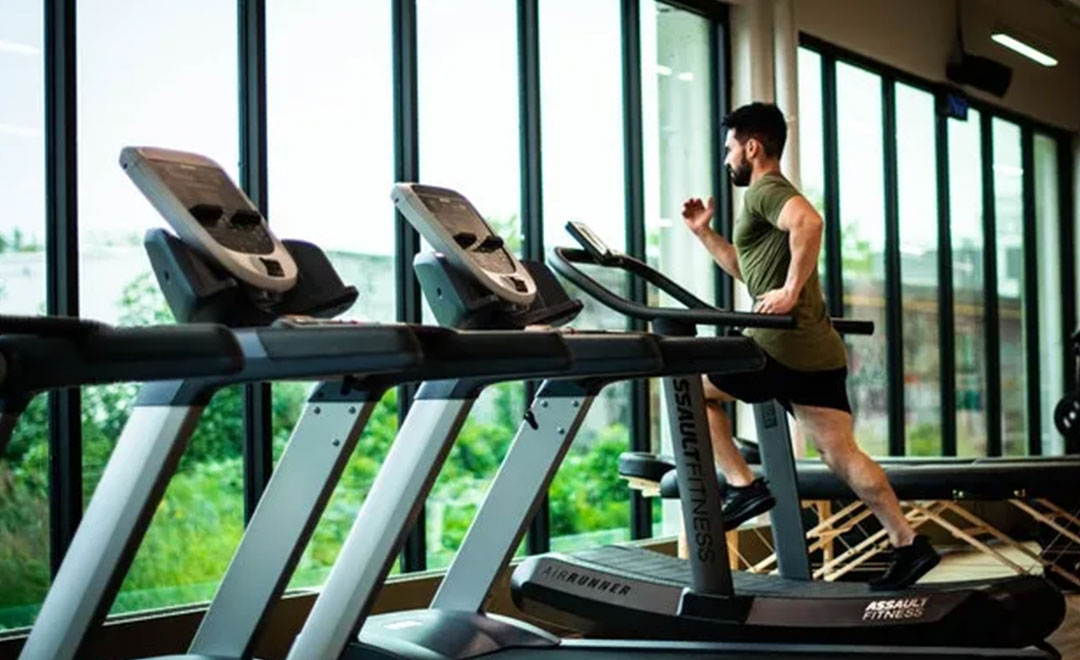Gym Workout Plan for Beginners
When you’ve got goals to crush, this easy workout plan will help you take your fitness to the next level.
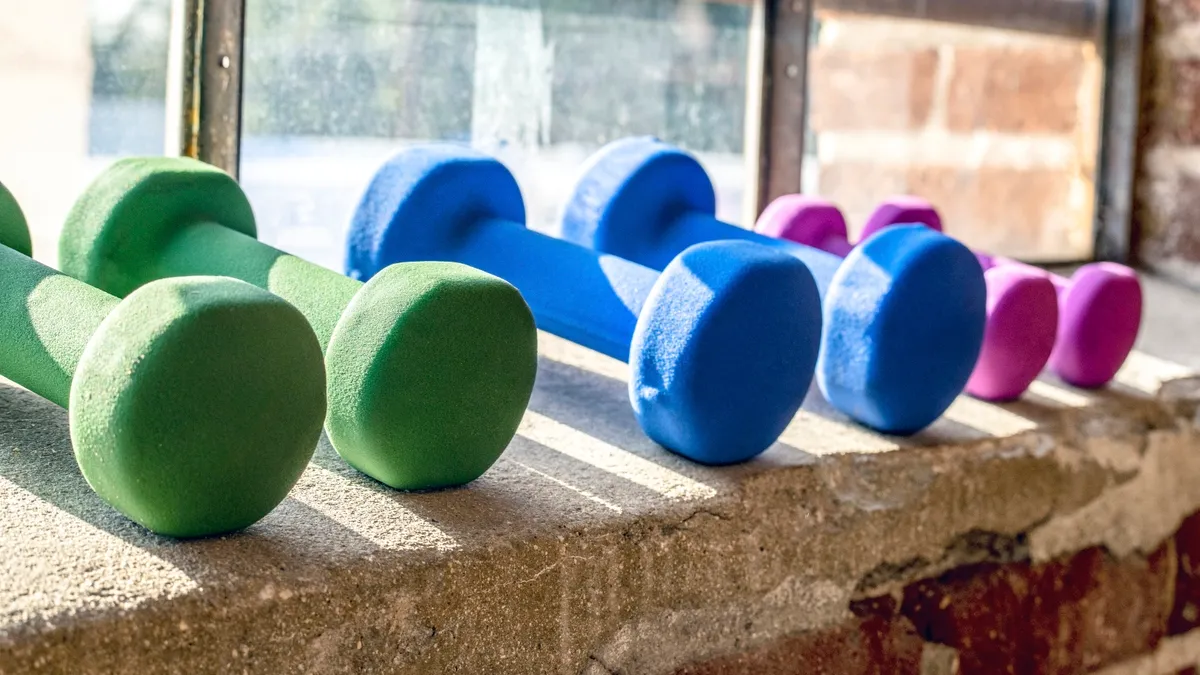
People who have been going to the gym for years make it look so easy. What’s their secret to staying motivated and getting in shape, anyway? The answer is simpler than you might think: everyone starts as a beginner, just like you. And being a gym newbie means starting with a beginner gym workout.
Choosing a beginning gym workout plan works for a lot of reasons. For starters, it considers the fact that your body isn’t ready to take on world champion-style weightlifting, so it starts you off easy. Beginner plans also include a range of activities and exercises so you can try lots of things and figure out what you really like. Because let’s face it—if you start off with a workout that’s too hard, it’s easy to give up on your goals. Throw in the (gym) towel, you’re done!
But that’s not how we roll here atPureGym. We’re all about helping everyone get the most out of their local gym, so we recommend using this great beginner gym workout to get your feet wet.
First Things First: Stretch It Out!

You might walk into a PureGym gym like a boss and ready to lift. But first, we stretch.
Stretching warms up your muscles and gets them loose and limber. This is especially important during a beginner gym workout plan because your muscles aren’t used to this type of effort yet. Stretching will increase your flexibility and range of motion, plus reduce your risk of injury. And best of all, you don’t need any gym equipment to stretch.
Some easy stretches you might do are:
- Standing calf stretch: Stand straight and place your hands on the wall, then step back with one foot. Press your heel into the ground and hold in place for 5-10 seconds. Then switch sides.
- Standing quad stretch: Hold onto a chair or the wall for balance, then bend one knee and grab your foot behind you. Bring your leg back until your thighs are even, then hold in place for 5-10 seconds. Repeat on the other side.
- Shoulder rolls: Roll your shoulders back into a circular motion several times, then repeat in a forward motion.
- Chest stretch: Stand with your feet apart, then bring your hands behind you and interlock your fingers. Straighten your arms and lift your chest, then hold in place for several seconds.
Ideally, you will work all parts of the body during your warm-up stretches. Don’t forget your ankles, wrists, and neck, as these areas often get overlooked!
Warm Up on a Treadmill
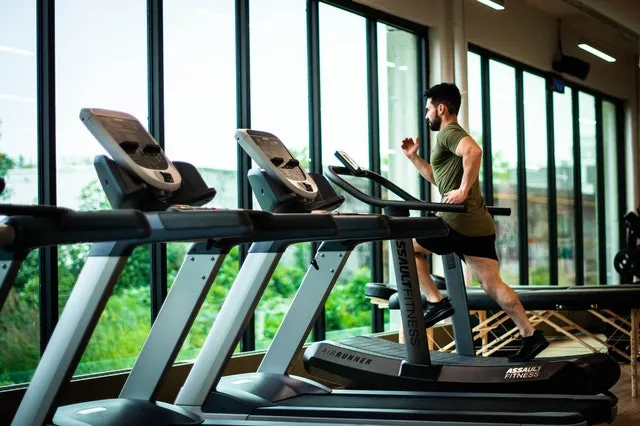
Don’t underestimate the power of walking, one of the very first exercises we ever learn to do as humans. Walking is rich in cardio benefits and will help you warm up your body, get your heart rate going, and burn calories to boot.
Side note: You can also use an elliptical machine. Aim for about 10 minutes or so before moving on.
Choose a speed that suits your style. No need to give Usain Bolt a run for his money. Just focus on whatever pace you’re comfortable with. While you’re walking, take in the gym around you to get a feel for its layout and the other machines available.
Try Some Bodyweight Exercises
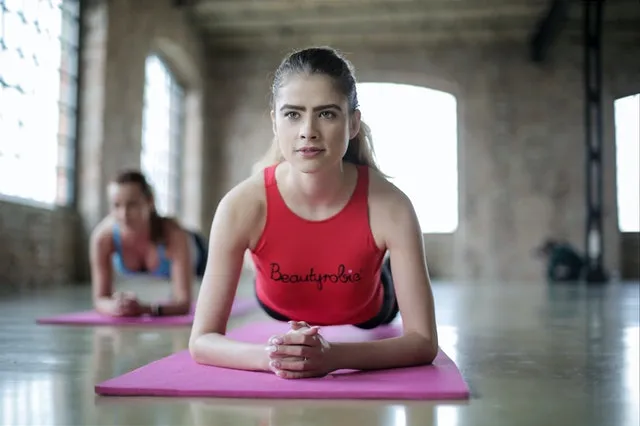
If the idea of using lifting machines still scares you, you might be relieved to know that you don’t need them to get a good beginner workout. Just use your own body and a comfy mat!
Granted, you could totally do bodyweight exercises at home, but being in a gym full of mirrors is extremely helpful for checking your form and getting help from a coach to make sure you’re doing them correctly. Otherwise, you might not get the full benefit of every movement. Or worse, you might open yourself up to injury.
We recommend new gym-goers start with the following bodyweight exercises:
- Squats
- Lunges
- Step-ups
- Push-ups
- Tricep dips
- Planks
Try doing ten reps of each bodyweight exercise (10-15 seconds for the plank) and rest for 30 seconds in between each one. As you get more accustomed to working out, you can increase the number of reps and even do multiple sets.
Get Smart about Dumbbell Exercises

Ready to try some weights? You should be all warmed up by now, and dumbbells are a great introduction to weightlifting. Not to be confused with a barbell, dumbbells are smaller weights designed to be lifted by one hand. They come in varying sizes so you can find the weight that feels right for you.
Dumbbell Chest Press
The dumbbell chest press is an easy exercise for beginners. Once you find a set of dumbbells that feel good, lie down on a flat bench with a dumbbell in each hand. Make a 90-degree angle with your forearm and upper arm so that the dumbbells are in the air. Press both dumbbells upward at the same time using your chest muscles until your arms are nearly straight, then bring them back down into the 90-degree angle. That’s one rep. Try to go for ten reps, then take a rest.
Dumbbell Row
Another easy one you can try is the dumbbell row. You’ll use that same flat bench, only this time, you’ll place one knee, leg, and hand on the bench while the other foot remains on the floor beside, not behind, the knee on the bench. Whichever foot is on the floor will be on the same side as the hand holding the dumbbell. Then, lift the dumbbell like a hook grabbing something off the floor. Bring it close to your chest, elbow bent behind you, then extend downwards without putting down the dumbbell. That’s one rep. Try not to use your legs and rely only on your arm and back muscles.
Dumbbell Lunges & Squats
If you enjoyed doing the bodyweight lunges and squats, you can add a dumbbell into the mix for a little more challenge. For lunges, you’ll hold a dumbbell in each hand, then do your lunges as usual. Keep your back straight with your arms straight down by your sides. For squats, use one dumbbell and wrap both hands around it. Keep it close to the middle of your chest as you squat, rise, and squat again.
Moving on to the Barbell
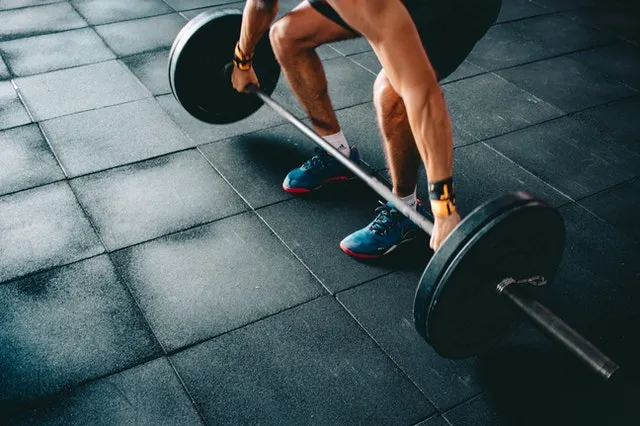
A barbell is a long, single bar that can be used as a standalone tool or with free weights added to it. It’s usually hanging out on the squat rack, but you can do so much more with it than squats.
Though it’s just one long bar, it can actually be pretty heavy without any weight—about 45 pounds, on average. As part of your beginner gym workout plan, you can try lifting just the barbell for a few reps to get a feel for it. When you’re ready, you can toss on some free weights to increase the difficulty.
Barbell Hip Bridges
An easy barbell exercise is barbell hip bridges. Find a flat bench, then make a “table” with your shoulders on the bench, feet on the floor, and the barbell centered on your hips. Use your hips to lower your bottom toward the ground (but without touching it), then back up into the “table” position while squeezing your glutes. That’s one rep.
One Last Thing: Stretch It Out!
“But I already did this!” We know, but you need to stretch again after your workout. This helps your muscles release lactic acid, which is what makes your muscles feel sore and achy after a workout. And when you feel great, you’ll feel more motivated to work out again!
- https://www.nuffieldhealth.com/article/gym-workouts-for-beginners
- https://www.planetfitness.com/community/articles/beginner-workout-plan-your-first-week-gym
- https://www.nerdfitness.com/blog/a-beginners-guide-to-the-gym-everything-you-need-to-know/
- https://blog.nasm.org/stretches-for-beginners
- https://www.openfit.com/stretching-for-beginners
